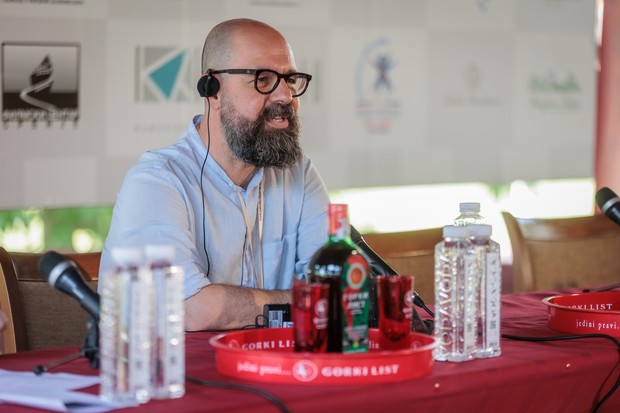Vasilis Katsoupis • Director of Inside
“After this experience, I'm completely sure that art is not a luxury”
- The Greek director opens up about the origin of his latest project, working with Willem Dafoe and his views on art as a basic human need

After it had its world premiere in the Panorama section of the Berlinale earlier this year, Greek director Vasilis Katsoupis has presented his feature debut, Inside [+see also:
film review
trailer
interview: Vasilis Katsoupis
film profile], in the competition of the 30th European Film Festival Palić, where it received a Special Mention from the official jury (see the news). We sat down with the director to discuss his latest work, revolving around an art thief played by Willem Dafoe, who breaks into a luxurious penthouse in New York and gets trapped inside.
Cineuropa: How did the original idea come about?
Vasilis Katsoupis: While observing the high-rises in New York, I started thinking about survival stories like Robinson Crusoe and Cast Away, but in a different setting – in the middle of a crowded megalopolis, instead of on a lonely island. I believe that this context intensifies the sense of loneliness because you can see everyone around you going on with their lives while you are stuck there. That was the initial idea. The antagonist is the apartment itself, which at the same time represents its owner, personified as his art collection. That’s how the artwork came to be one of the most important elements in the film for our narrative and storytelling.
You have said in previous interviews that Willem Dafoe was always your first choice for the main role. What did it mean to you to have him on board, and how did you manage to convince him?
I know it's weird to say that he was my first choice because it sounds arrogant. Who am I to have Willem Dafoe as my first choice? It was a dream come true to secure one of the actors that I had admired since my childhood. I would never have thought that I would really make a film with him. But dreams come true. I think he was attracted by the idea and the script that [screenwriter] Ben Hopkins and I presented to him.
He must have had a big influence on how the character developed. How did you work on the role with him?
I completely trusted him with this character. I told him that the film could only work if the character, and the things he did, resonated with him and the way he would react in that situation. We worked together on the final drafts of the script, and we continued adapting it while filming. Around 40% of what you see is improvised. We had a fantastic and very fast cinematographer [Steve Annis], who could quickly arrange the lightning. We managed to be more open, and this openness helped a lot.
Films about people trapped in places have basically become a genre. What attracts you to these kinds of stories?
The reactions of the characters and their ingenuity. I think it's a story that everyone can identify with, especially after the lockdown experience. We were trapped in our flats and houses, and we managed to get through it in very different ways. That's why I wanted to make a film open to interpretation, according to everyone's experiences.
Were you worried about avoiding potential plot holes in the script?
If you watch the film logically, maybe it has too many plot holes, but it is not about that. It's about getting inside this black hole, letting yourself get lost in time and following this character. If you go and try to find all the clues like a detective, you miss the point. You have to watch films and view artwork with your heart, not with your brain.
Do you consider cinema and art as a luxury or a basic human need?
After this experience, I'm completely sure it's not a luxury. In modern society, we tend to commodify art. We look at it as an investment. However, if you think about the amount of music, films and books we consumed during the lockdown, it’s clear that it was the only way to survive. If I lock you in an empty room for days without any visual stimulation, even if you have food and water, you will go mad. This is what art is, a visual stimulation, and also a tool for communication. This is how we know how life was for ancient civilisations, because of the artwork that they left behind. It's a time capsule.
Speaking of luxury, the possibility to shoot chronologically is still a rare treat in filmmaking. How was the process?
This is one of those projects that you couldn't film any other way, because the whole set was getting destroyed day by day. It was actually cheaper to shoot chronologically, but it also helped the actor because he could develop his character progressively. It was a beautiful journey.
Are you working on another project at the moment?
I'm working on a new film with my partner in crime, Ben Hopkins. It involves an American couple from New York who start a road trip around the countries of the former Yugoslavia, but it is still in the works.
Did you enjoy reading this article? Please subscribe to our newsletter to receive more stories like this directly in your inbox.















